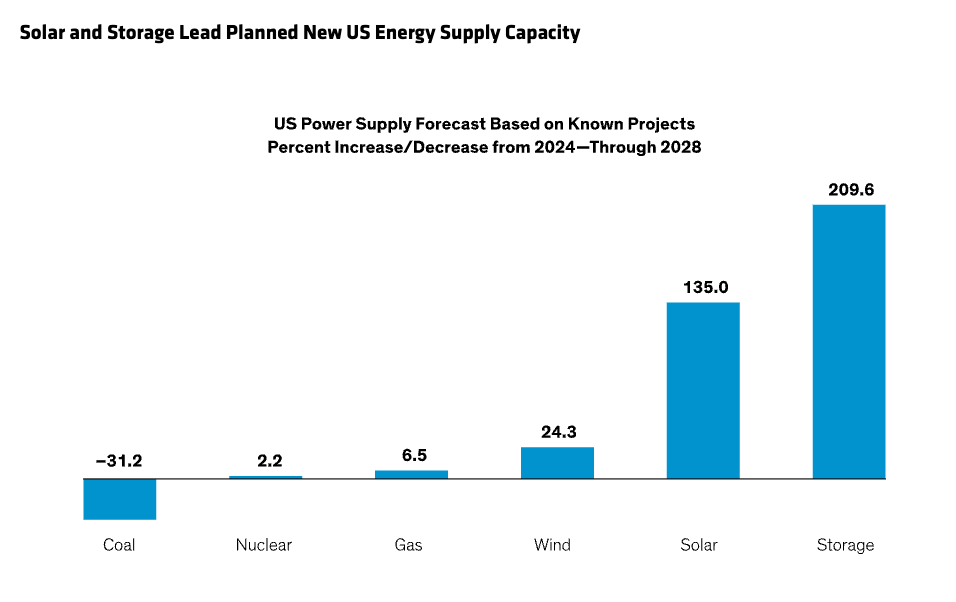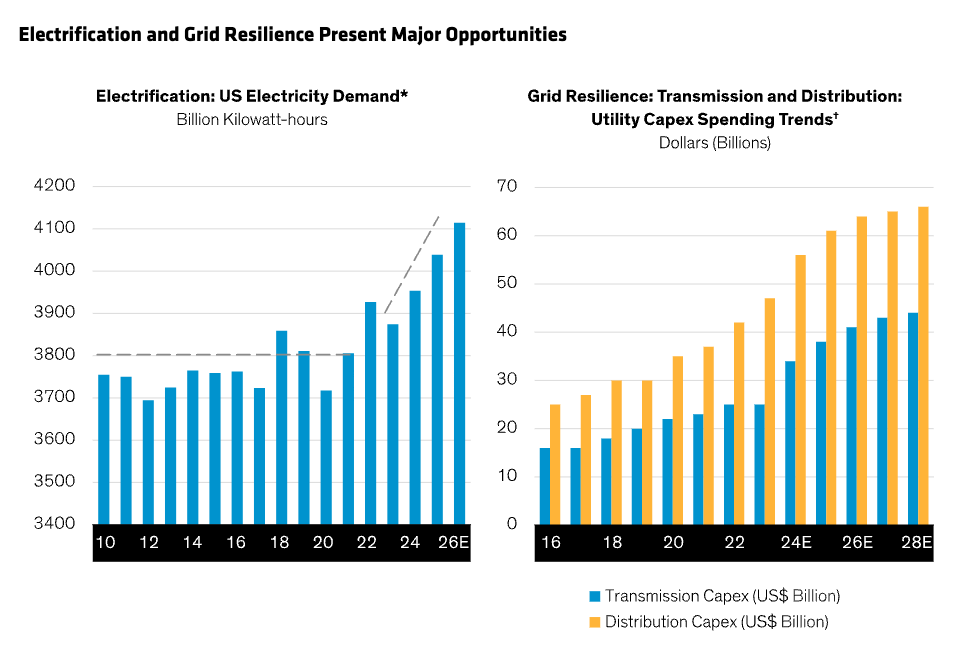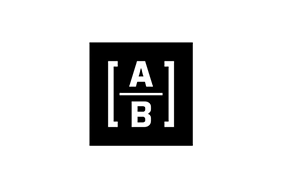AllianceBernstein: Power Play: How To Invest Smarter in the Race for Electrification
Though the new US policy focus is on oil and gas, wider opportunities still beckon.
Published 03-26-25
Submitted by AllianceBernstein

Abundant low-cost energy is foundational for President Trump’s program. Yet, while his initiatives to fast-track oil and gas development have grabbed the headlines, they’re only a part of the energy picture. We believe equity investors will continue to find good opportunities in renewable energy and particularly in the infrastructure for electricity transmission and storage.
Power Needs Are Growing
Power needs in the US and across the world are growing at a pace and scale that require multiple power generation solutions. Renewable energy projects are set to become a much larger part of the mix because of two key advantages: low costs and speed to market. Though recent policy changes in the US—and budget pressures across Europe—may temper that trend, they won’t stop it, in our view (Display).

The Need for Speed
Speed to market is an important consideration. In the US, for instance, AI is substantially increasing power demand at a time when significant amounts of coal-fired power generation are being retired: the vast majority of coal plants are too old and costly to run. Wind and solar are often the only viable replacements for two reasons: first, they can come onstream fastest; and second, even without subsidies, they are cost-competitive—when paired with battery storage—versus carbon-based alternatives. In addition, equipment costs are the lowest they’ve ever been, and the cost of producing clean power continues to fall across the globe.
All else equal, a loss of government subsidies for renewables would make gas relatively more attractive. But wind and solar would remain viable just based on economics, in our view. We also believe the new US policies will likely be less damaging than feared for low-carbon solutions. In particular, we don’t expect a full repeal of the Inflation Reduction Act (IRA) which provides significant federal funding / tax incentives across renewables, other clean technologies and electricity transmission. (The IRA has created many jobs across the US, too.) State-level and utility spending will also likely remain robust, favoring utility-scale, commercial and industrial, and community projects.
Look Beyond Familiar Investment Opportunities
Of course, the path to renewable profits and returns hasn’t been smooth. For example, some renewable developers have been badly hurt by post-COVID interest-rate rises and cost inflation, and even at current share price levels we believe investors should be highly selective in this subsector. But the scale and breadth of developments in the power transition are often underestimated, in our view. We think these dynamics are creating major opportunities in electrification and energy efficiency.
Energy Infrastructure Needs Upgrading
Upgrading and reinforcing electricity grids will be a particularly important focus. In the US and across the developed world, grids are approaching or have exceeded their planned life but need to carry massively increased loads, especially considering AI-related power demands and the increasing need for grid resilience to mitigate climate, geopolitical and other risks.
The push for energy efficiency, the increase in data centers and local regulations are all driving electrification.
Companies such as Prysmian (copper and fiber cables, systems and accessories), Hitachi (cables and transformers), Hubbell (cable distribution) and Schneider (“smart grid” solutions to improve grid reliability and flexibility) have all benefited from grid spending. Their markets have backlog visibility extending several years ahead. US policy changes that encourage reshoring will also benefit stocks involved in the push for electrification. But investors will need to be selective—not all component suppliers benefit from the same competitive advantages.

Watch Points for Investors
Investors in these industries should pay particular attention to companies’ operational efficiency metrics as well as identifying which regulations, tailwinds and headwinds are material for their prospective investments.
Given the global nature of many of these businesses, it’s important to ensure that companies across the supply chain provide adequate data disclosures. Countries outside the US may have stringent sustainability requirements that require companies with supply chains in their jurisdictions to comply with local sustainability regulations. Offenders may face fines and greater difficulty raising capital.
Selectivity Is Key
Some of the early optimism around clean energy companies has dissipated, and new US policies may have a negative impact in specific areas. That said, the power transition is still very much underway and continues to offer a wide range of opportunities.
For investors, the keys to success will be thorough analysis and continued vigilance. That means investors must focus not only on the business models and fundamentals of their selected companies, but also how the businesses are affected by the evolution of regulation and government policies.
References to specific securities discussed are not to be considered recommendations by AllianceBernstein L.P.
The views expressed herein do not constitute research, investment advice or trade recommendations, and do not necessarily represent the views of all AB portfolio-management teams and are subject to change over time.
View original content here.
Learn more about AB’s approach to responsibility here.

AllianceBernstein
AllianceBernstein
AllianceBernstein (AB) is a leading global investment management firm that offers diversified investment services to institutional investors, individuals, and private wealth clients in major world markets.
To be effective stewards of our clients’ assets, we strive to invest responsibly—assessing, engaging on and integrating material issues, including environmental, social and governance (ESG) considerations into most of our actively managed strategies (approximately 79% of AB’s actively managed assets under management as of December 31, 2024).
Our purpose—to pursue insight that unlocks opportunity—describes the ethos of our firm. Because we are an active investment manager, differentiated insights drive our ability to design innovative investment solutions and help our clients achieve their investment goals. We became a signatory to the Principles for Responsible Investment (PRI) in 2011. This began our journey to formalize our approach to identifying responsible ways to unlock opportunities for our clients through integrating material ESG factors throughout most of our actively managed equity and fixed-income client accounts, funds and strategies. Material ESG factors are important elements in forming insights and in presenting potential risks and opportunities that can affect the performance of the companies and issuers that we invest in and the portfolios that we build. AB also engages issuers when it believes the engagement is in the best financial interest of its clients.
Our values illustrate the behaviors and actions that create our strong culture and enable us to meet our clients' needs. Each value inspires us to be better:
- Invest in One Another: At AB, there’s no “one size fits all” and no mold to break. We celebrate idiosyncrasy and make sure everyone’s voice is heard. We seek and include talented people with diverse skills, abilities and backgrounds, who expand our thinking. A mosaic of perspectives makes us stronger, helping us to nurture enduring relationships and build actionable solutions.
- Strive for Distinctive Knowledge: Intellectual curiosity is in our DNA. We embrace challenging problems and ask tough questions. We don’t settle for easy answers when we seek to understand the world around us—and that’s what makes us better investors and partners to our colleagues and clients. We are independent thinkers who go where the research and data take us. And knowing more isn’t the end of the journey, it’s the start of a deeper conversation.
- Speak with Courage and Conviction: Collegial debate yields conviction, so we challenge one another to think differently. Working together enables us to see all sides of an issue. We stand firmly behind our ideas, and we recognize that the world is dynamic. To keep pace with an ever changing world and industry, we constantly reassess our views and share them with intellectual honesty. Above all, we strive to seek and speak truth to our colleagues, clients and others as a trusted voice of reason.
- Act with Integrity—Always: Although our firm is comprised of multiple businesses, disciplines and individuals, we’re united by our commitment to be strong stewards for our people and our clients. Our fiduciary duty and an ethical mind-set are fundamental to the decisions we make.
As of December 31, 2024, AB had $792B in assets under management, $555B of which were ESG-integrated. Additional information about AB may be found on our website, www.alliancebernstein.com.
Learn more about AB’s approach to responsibility here.
More from AllianceBernstein

